The Great Depression initiated a deep recession in the US from 1929 through 1941. About 25% of the population was hungry, at various levels. Their poverty was deeply unsettling. Today, our grandparents remind us how fortunate we are by comparison.
The rest of the population still had to adjust their diet, and cope with rations. Only the upper class enjoyed fine cuisine, while the general middle and working-class did not need to stand in breadlines.
For the poorest, if it were not for the ingenuity of immigrant populations, who were knowledgeable about the plant world and its benefits, as well as the foraging expertise the Native American population passed down, even more, would have gone hungry.
Ironically these populations, who already had trouble establishing their credibility in the US, were sometimes regarded with skepticism for their life-saving harvesting skills.
Tumbleweeds
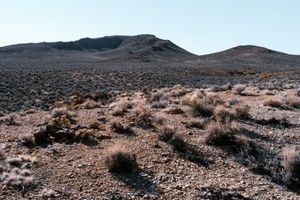 The most dramatic levels of poverty took place in the Midwest.
The most dramatic levels of poverty took place in the Midwest.
In the early 1930s, drought caused dust bowl conditions, particularly in areas like Kansas, Missouri, New Mexico, the panhandles of Oklahoma and Colorado. Droughts reduced the plant population that normally flourished.
Farming became very difficult and people had to make do with whatever was available. Fortunately, Russian immigrants had brought Russian Thistle (tumbleweed) seeds from what was then called Russia, and also Eastern Europe.
It is hard to imagine tumbleweed becoming part of a meal. However, our grandparents would chop them into salads or cook with them in soups, during the Great Depression. In the winter months, they would brine and can tumbleweeds to provide crucial nutrients.
Tubers
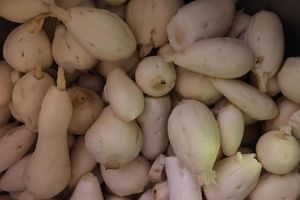 The Prairie Turnip, a member of the pea family, had been one of the most important foods that the plains Indians had taught the settlers how to use when they migrated from the east.
The Prairie Turnip, a member of the pea family, had been one of the most important foods that the plains Indians had taught the settlers how to use when they migrated from the east.
Our grandparent rediscovered the starchy root during the Great Depression, boiled it, and mashed it.
People foraged and cooked the Jerusalem Artichoke, a tuber, native to the midwestern states in the same way but sometimes ate it raw as well.
Pawpaws
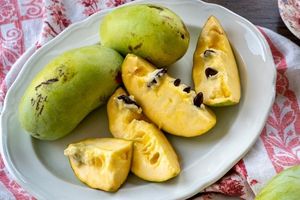 Small Pawpaw trees yielded a fruit that had a purplish-brown skin.
Small Pawpaw trees yielded a fruit that had a purplish-brown skin.
Common in the southern states, from the Atlantic to the central plains this fruit tasted somewhat like a pulpy banana.
Related: The Cherokee’s Favourite Edible Tree (PawPaw)
Children in the south sang a song with the refrain, “Picking up pawpaws put them in the basket, way down yonder in the pawpaw patch.” as they gathered the fruits.
Lamb’s Quarters
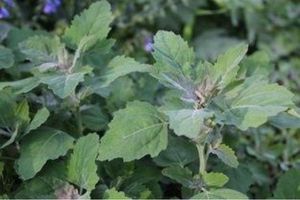 There are stories during the Great Depression of massive harvests of Lamb’s Quarters.
There are stories during the Great Depression of massive harvests of Lamb’s Quarters.
Normally fuel for livestock, this form of ‘wild spinach’ is a powerhouse of vitamins. People harvested it in such great quantities that they would fill their bathtubs with it in order to wash it.
They used in salads and side dishes, and also canned it for the winter months. Even in the city, lots of foragers could spot this precious green full of minerals to harvest when they had no other option.
Purslane also grew in abandoned lots where most plants would wither. This sprawling succulent also contained a high mineral content.
Dandelions
Dandelion greens and roots were a viable option.
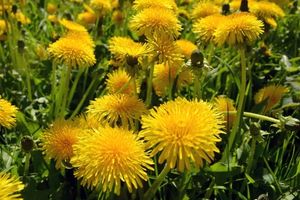
Italian immigrants primarily propagated these hearty and powerful greens and people would add them to salads, or sautee them in olive oil.
During the Great Depression, they dried roots and boiled them as a coffee substitute or added them to soups for extra nutritional value.
Related: How to Make Dandelion Bread (With Pictures)
If you were lucky enough to have flour to make dandelion fritters with the flowers this plant provided a three-course meal.
Mushrooms
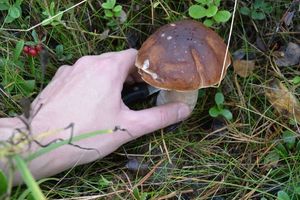 Greek immigrants were inclined to forage for wild mushrooms and taught others in damp forested areas to do the same.
Greek immigrants were inclined to forage for wild mushrooms and taught others in damp forested areas to do the same.
These fungi had incredible adaptogenic value to relieve the stresses of the times. They could be dried and stored and used in a variety of ways, fried or mixed with a carbohydrate like potatoes.
Those with ancestors from the Mediterranean, in general, knew of and used Chamomile during the Depression to ease stomach pain, subdue stress, and promote sleep. Although harder to find than some herbs, it grew in warmer climates and higher elevations in the US.
Acorns
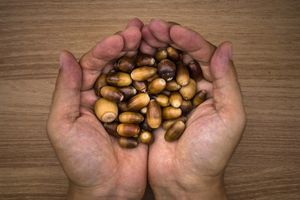 Throughout both the eastern and western parts of the country, acorns provided important nourishment for digestive systems ravaged by malnourishment.
Throughout both the eastern and western parts of the country, acorns provided important nourishment for digestive systems ravaged by malnourishment.
This gentle and nourishing ingredient was boiled and dried to make flour and boiled into mush.
Without the knowledge of the Native American population that spread throughout the Pacific Northwest and parts of the Northeast, people may not have been aware of the acorn’s value.
Wild Huckleberries
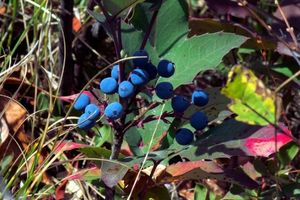 Huckleberries thrive in areas that have been burned.
Huckleberries thrive in areas that have been burned.
In 1928, eighteen years after the Great Burn of 1910 in areas of the Pacific Northwest huckleberries began to thrive. It was timely because by 1930 the government constructed access roads to create berry-picking jobs.
During the Great Depression, Huckleberries became a vital crop and source of nutrition. In an area known as the Noxon District and adjoining territories workers harvested more than fifty thousand gallons by 1933.
Especially in the Pacific Northwest, wild Blackberries and Raspberries were foraged when families were fortunate enough to find them. They were quite precious. It was more common, in the Northeast, particularly along the coastal regions for people to harvest Cranberries in non-commercial blogs.
Ferns
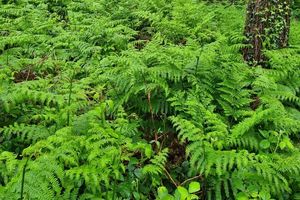 In the early spring, Fiddlehead Ferns appeared signaling the end of winter and the provision of another food source. The young fern heads appeared in damp, dense, wooded areas that made them available to rural populations.
In the early spring, Fiddlehead Ferns appeared signaling the end of winter and the provision of another food source. The young fern heads appeared in damp, dense, wooded areas that made them available to rural populations.
Related: The 5 Most Common Edible Weeds In Your State
Packed with nutrients and soothing for digestion, people put these in salads, stews, and also canned them.
Milkweed Pods
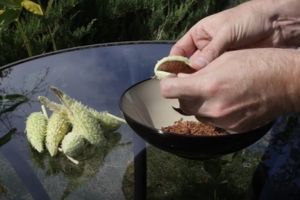 Milkweed pods were collected in the fall and boiled twice to get rid of their bitter taste.
Milkweed pods were collected in the fall and boiled twice to get rid of their bitter taste.
However, the plant was plentiful. It grew throughout the US, even in areas that lacked irrigation during the midwestern drought.
Milkweed contains vital properties for reducing cold, cough and flu symptoms. This was invaluable at a time when immunity was low across local communities and in just about all families.
Nettle Leaves And Sycamore Seeds
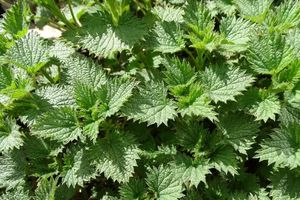 Nettle leaves have to be harvested properly because there are spikes on the perimeter of the leaves.
Nettle leaves have to be harvested properly because there are spikes on the perimeter of the leaves.
However, the Irish knew the wealth contained in this plant.
Full of iron, minerals and vitamins it was a one-stop shop, similar to lamb’s quarters.
It was best sauteed, and canned for the winter months. As a medicinal remedy, it was superior for respiratory ailments, digestive issues, and liver complaints.
Sheep Sorrel and Shepherd’s Purse had similar benefits to Dandelion but were not as bitter. Both were known to and used by descendants of the Irish because they feed domestic livestock. However sheep sorrel was a prime substitute for lettuce.
Found along the eastern seaboard, the midwest and even as far west as Arizona, Sycamore seeds were plentiful. The seeds are packed with iron, calcium magnesium and other essential minerals like niacin and zinc. Both seeds and fruit can also help dysentery, colds and coughs. Seeds were also ground and made into flour.
Hard times necessitate creativity and ingenuity. Although devastating to many, the legacy of resourcefulness our grandparents have left us is invaluable.
Shortages will occur, and climates change, yet our plant allies remain, offering us greater nutritional value than many other foods, along with countless additional uses.
You may also like:
 8 Homesteading Items You Should Get From The Dollar Store
8 Homesteading Items You Should Get From The Dollar Store
This Hidden Survival Garden Will Keep You Well Fed When SHTF (Video)
Self-Defense Weapons That Are Illegal In Your State. Do You Have One Of Them?
How To Deal With Neighbors And Friends That Come Begging For Food At Your Door In A Crisis

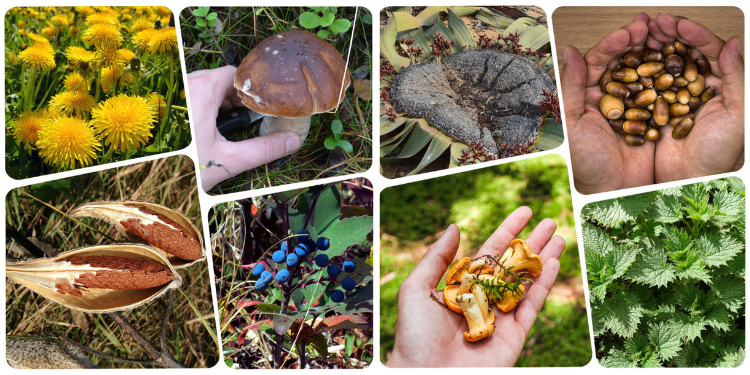













A tribute to the stubborn nature of human survival. Some facts to think about:
Population USA 1929 the start of the Great Depression 121 million. Plenty of folks were small farmers, First or Second Generation “Old World” farming types very high. Knowledge of wild crafted foods described in this article was pretty common.
The sense of common decency was very high as even Hobo’s wandering about were not feared but often chased out of richer areas as a pest. NO Welfare system aside from the kindness of others and churches-social groups like the Lions. Soup Kitchens supported by the towns by donations and volunteers.
Population USA 202 333 million. Less than 1% of population has any hands-on farming experience. Real Non-Internet “Skilled” folks who actually have eaten and chosen to incorporate wild foods into their daily diet less than 1% (my best semi-educated guess, could be wrong but I doubt it).
That and you *might* want to research the nutrition values of the listed foods. You’re going to be working hard “harvesting” these and will lose weight at best, struggling to avoid true starvation. COMPARE to the humble potato and wonder why I’m always saying PLANT POTATOES. Low work, high yield, Easy to Store through the winter, excellent nutrition compared to most wildcrafted foods.
Current sense of “common decency” well, Black Friday videos about “Ordinary people” going into fistfights and worse over a Cheap Flat Screen TV speaks LOUDLY to me. Folks getting curb stomped by gangs while others walk by or watch and use their cellphones to make it “Viral”. A Gov.com “Welfare” system that Encourages young girls to have many babies from Different “Baby Daddies” (often “men” with plenty of Criminal interaction with the prison system). Local soup kitchens often driven out of business by Gov.com and regulations. Volunteers at charity-homeless operations often attacked, robbed, sometimes reports of rape and murder from their “Clients”. Need I say more here?
YES, most of this occurs in Democrat Controlled Cities. Plenty in all major cities BUT the 90% of the American Population LIVES in those cities so I feel this behavior situation IS A REAL PROBLEM. BTW not just a Black problem as video and mug shots show plenty of white skinned folks involved. It’s a Lack of Morals thing. Lack of impulse control thing.
In general, it’s a No Parents that spanked their kid’s thing.
Hosea 8: 7 “They sow the wind
and reap the whirlwind.
The stalk has no head;
it will produce no flour.
Were it to yield grain,
foreigners would swallow it up.
BTW my data comes from the US Census Bureau. Complain to them if you don’t like these facts.
Our Population is triple what it was when Backyard Gardens were far more common than lawns today. Our knowledge AND helpfulness to and of our neighbors is far less. We have a rogue Gov flying and bussing IN illegal immigrants (and a LOT of them Military Age Males) from an Unsecured Southern Boarder without medical screenings Nor the COVID Vaxx the Gov seems to determined to force into Legal American arms.
This Vaxx is creating a Vaxxed Vs Unclean-deplorables Fracture in even my little classically friendly New England town due to Propaganda from Gov and Media. From a Dr. Faci-Gov.com Funded Bioweapon with a 98+ percent survival rate. A “disease” so “GRIM” you have to be Told About 24 hours a day in the “News” and TESTED to see IF you HAVE “It”.
Mind you the folks in the 1929 Great Depression survived the Spanish Flu Snip:
Spanish flu, also known as the Great Influenza epidemic or the 1918 influenza pandemic, was an exceptionally deadly global influenza pandemic caused by the H1N1 influenza A virus. The earliest documented case was March 1918 in Kansas, United States, with further cases recorded in France, Germany and the United Kingdom in April. Two years later, nearly a third of the global population, or an estimated 500 million people, had been infected in four successive waves. Estimates of deaths range from 17 million to 50 million, and possibly as high as 100 million, making it one of the deadliest pandemics in human history.
So, they knew just how bad things could be, Folks were REALLY DYING from the Spanish Flu, HEALTHY Young Folks not Morbidly Obese COVID “Deaths”, yet volunteers risked their lives to provide care and comfort to REALLY SICK PEOPLE, that needed no “Free COVID Tests” to KNOW they were in LOL “Trouble” as in a week off from school and work.
NO, I am not bashing the very few non-comorbidity deaths from COVID, untimely death is a tragedy. I’m medical and know the vast majority of COVID “Deaths” were Death WITH COVID, not Death FROM COVID. I’m from the state that listed a head crushed in by lack of motorcycle helmet death as “Death from COVID”.
We have a Depends wearing Sockpuppet who can almost read from a Teleprompter the laughingstock of the world telling Russia “Go ahead Make MY DAY” to a Nuclear Armed Nation who simply demands we stop deploying troops and nuclear weapons up against their boarder with Ukraine the latest’s one.
How would WE FEEL if Russia had installed troops and nuclear weapons on the Canadian and Mexican Boarders? Even if they told the world, it was for Peacekeeping.
We are in trouble. A Greater Depression is near. As Michael Yon says so well PanFamWar is coming and even He’s preaching two YEARS’ worth of food storage.
Isaiah 3: A Judgment Against Judah
…3the commander of fifty and the dignitary, the counselor, the cunning magician, and the clever enchanter. 4“I will make mere lads their leaders, and children will rule over them.” 5The people will oppress one another, man against man, neighbor against neighbor; the young will rise up against the old, and the base against the honorable.…
All this pre-coffee comment to say we are in TROUBLE folks. Not the you have to go shopping again to find your twinkies trouble, REAL Trouble.
Plant potatoes.
Get busy, your families will bless or curse you for what happens.
I would add to Michael’s comment, the electron microscope wasn’t invented until 1928 and the first virus wasnt identified until 4 years later in 1932, so the medical field wasn’t even certain what pathology they were fighting.
There was some experimentation with various “cures” during the 1918 flu event. Some were not so helpful. In 1917, Bayer’s patent for aspirin had expired so many start-ups began manufacturing aspirin and selling it for a lot less. Some doctors overdosed their flu patients with aspirin, causing internal hemorrhages. I don’t know if Bayer was still making their heroin products and if flu patients were dosed with herion also, thus killing off a few more.
Just as today, the actual numbers of sick people is questionable.
You speak the truth my friend. And I agree – let them think us crazy or paranoid for prepping; if the SHTF scenario hits soon, they’ll be the ones out in the cold.
Yes, they’ll be like the mob beating on the sides of Noah’s boat when the water level got waist high.
SHTF turns atheists into believers & mockers to beg for help.
craig the people had no idea what rain was…. and all of them where hybrid humans …. that the demonic angels bred with human women….. and created the neplines.. ..
pure evil and why Elohim flooded the earth
Dang Michael, I wish you were my neighbor down here in hot sunny Florida. You are a wealth of knowledge. I’m smart enough to know I have very little.
Margie: In my book, a person who is average and realizes it and seeks the guidance of someone who has demonstrated superior ability and USES IT is far superior to the individual who is dumber than dirt and too much so to realize that perhaps there is someone with superior intellect.
The real question is how much you are utilizing what abilities you were granted. Let me give you some personal examples. My grandson tested early as mentally superior. He tested in the upper percentile of mental ability. My granddaughter tested as just average in mental ability. He coasted through school just barely passing and courses that required any application of effort. He graduated from college with a BS in psychology. Three years after graduation he has advanced to flipping burgers for In ‘N Out Burgers. Unless he gets some impetus in his life he is going to drift from one low paying, minimal effort job to another. Not due to any lack of attention by his father who hired tutors for him, scrutinized what homework he produced while lying to his father about homework he didn’t feel like doing. He spends his time on line playing games chatting senseless chit chat with his friends.
My “average” granddaughter got mostly As and Bs in school and only rarely got a C. She has wanted to be a veterinarian since a small girl. During high school while her brother was playing video games she was busy working first at a stable where she paid for her riding lessons by mucking the stable and generally making herself useful while studying dressage riding herself. She ended up teaching riding to beginners before taking a job working after school in a vet’s office. She is currently enrolled in vet school inComorado and has already completed the outside work required for the course before she was even enrolled. She accomplished this by working in the vet’s office her last two years in high school. Many times the husband and wife vet’s left her in charge of the office onher last year working for them because of her demonstrated reliability and attention to detail when handling the clinic’s animals.
Silent Calvin Coolidge is quoted in talking about success. In the quote he mentions how many gifted people never amount to much, how the truly successful are many times not the most gifted, but the one attribute they all have in common is determination to stick to the task at hand.
President Calvin Cooledge “Nothing In this world can take the place of persistence. Talent will not; nothing is more common than unsuccessful men with talent. Genius will not; unrewarded genius is almost a proverb. Education will not; the world is full of educated derelicts. Persistence and determination alone are omnipotent.”
He is called Silent Cal, yet if one peruses quotes attributed to him I feel that person will find many compelling quotes attributed to “Silent Cal”
Perhaps because he didn’t shoot his mouth off at every opportunity like too many politicians but waited until he had something important to say, something along the lines of Better to the main silent and be thought a fool than to speak and to remove all doubt. Attributed to A. Lincoln.
Wow.. Thank you Michael for your wealth of knowledge. I too wish we were neighbors, lol. I keep hearing different info on “best land/ states to move to, prep in”.. I’d like to be 30 min from nearest medical facility, but far away enough and hidden on many acres. Any suggestions? Thank you.. Ani
I have been reading old letters from my relatives from the 1930’s. One great uncle went on a trip to Michigan in 1935 and states that people were harvesting thistles with their mowing machines, because that’s all they had to harvest at that particular place. One more to add to the list.
Russia doesn’t need to put nuclear weapons on our borders. They’re already doing an effective job of destroying us from within, dividing us through the masterful use of social media, turning reasonable discussion into political battlegrounds, organizing and controlling both sides of virtually every debate This is a decent article. The first comment has reasonable points made, but even it can’t be made without becoming political. Both major political parties are so under Mr. Putin’s control, that the late Nikita Khrushchev is probably laughing his head off as he rolls in his grave. For those too young to remember, it was he who promised to bury us, without firing a shot. So, yes, we’re in a great deal of trouble because we’re a “house divided”, the kind that Abraham Lincoln said cannot stand. So yes, plant potatoes if you want. I’m planting beans myself. I’m sure my comments will also follow this stupid political divide so I’ll see how many “thumbs down” I collect. It’s the one on the right.
John what’s NOT Political nowadays?
Politics is Driving the US Clown Car over a cliff.
Politics shut down pipelines and raised the prices of heating fuel and gasoline.
Politics caused China to slow roll our shipping causing “supply line issues “.
Politics forced the shutdown of many business to “stop COVID ” AND Politics made great Propaganda about letting them reopen as JOB GROWTH.
The Roman Senator Seneca spoke about this as How a nation can survive outside threats but the Traitor within is the Plague.
Profitable Politics Sold us out. Politics is why China has us over a barrel about so many Critical things.
Nothing wrong with planting beans, adding potatoes and cabbage makes a decent survival garden.
Food is a weapon for tryants. Grow food friends. The cheeto stained keyboard down arrows feel free to starve. Your on your own.
right on man….. and forget that voting is pointless now too.
“Your children’s children will live under communism. You Americans are so gullible. No, you won’t accept Communism outright, but we’ll keep feeding you small doses of Socialism until you will finally wake up and find that you already have Communism. We won’t have to fight you; We’ll so weaken your economy, until you fall like overripe fruit into our hands.”
– Nikita Khrushchev
Michael, of course everything is political. But, through the political discourse of independent representatives from throughout the country, our founders expected commonalities of action to emerge while rejecting interests not shared by the broad body. They made no provision in the constitution for political parties whereby only two choices are ever put forth, and whereby the choices can be manipulated by anyone, foreign or domestic, with the money to feed social and public media whatever they choose. If you can control both sides of an argument, you can take it anywhere you want while you leave your minions behind, still arguing. The democrats and republicans are being manipulated and are taking us to a point from which there is no retreat. Choosing the lesser of two evils is still an evil choice. So, many of us are looking for ways to get beyond fearful times, making provisions for what we might need. Maybe, the first thing we should do is rip away our political affiliation badges and see each other’s real selves and base our judgments on the character we see in them, without a badge. The people have more in common, to be united, than they do to be divided by whatever message stirs their ire the most.
My family’s history during the Great Depression and the Dust Bowl and the Great Mississippi River Floods all included poke greens. Large volumes of them. Even in the 60s I was collecting poke leaves for my mother to prepare salads, wilted greens (greens sauteed in bacon fat). We also ate American persimmon, wild blackberries, wild strawberries, wild hickory nuts, wild black walnuts, and made sassafras tea. Among many other things.
However, that would not have sustained us I know from personal experience. Without hunting, fishing, having two milk cows, at least one and usually two pigs raised from runts given to us by our landlord that he would have destroyed, 20-25 chickens, and a huge garden, we would not have made it. And even if we had, our physical health and mental health would have suffered greatly.
Simply eating foraged plants, especially now when there are fewer places to find them and more people that will be looking for and using them, simply will not be enough on which to survive.
It is extremely important, however, to harvest them when you can, as they do supplement everything else you might be able to get, grow, or raise. They can add some flavor to tasteless meals, extend stomach-filling even if low nutrition foods, and help avoid appetite fatigue (as long as they are not all you are eating).
And, like the 20s, 30s, and early 40s, large tracts of land will be denuded of not only these kinds of edible plants, but also wild game. And more than a few pets will disappear, as well. Even zoo animals my go into the pot in some places.
Just my opinion.
Visit a zoo in Venezuela. I haven’t but the lady doctor who says she is from Venezuela and other reports say that zoo animals have been eaten in that country, so unless Fido is earning his keep as a vigilant watch dog and Miss Kitty is consistently bringing home to dents for the pot, you are correct, one is not going to see man pets.
Jerry,
You are right about the plants that are foraged not being enough. There is a reason why some wild plants have never been a part of the human diet. This article mentions sagebrush. Sagebrush is fine for pronghorn deer and some other animals but eating any quantity by humans is tough on the liver. If a person’s liver is already compromised by whatever previous toxins the person has been exposed to, eating various foraged foods might not be the best option.
Jerry if you don’t mind can you post what garden crops that kept your family fed,please?
Also some idea of their grow zone so friends here could adjust to their area?
Red is in the desert, I’m in zone 5 forested so we grow differently.
Any serious gardeners suggestions welcome .
Humorous side story..
I almost found out just how good a hickory stick is for educating one in the ways of prepping. My grandmother sent me out to pick poke salad. Me being the smartass little kid, I decided to bring back a sack full of jimsonweed. She was reaching for the switch, ranting about how I NEED to learn the difference between the two plants. She was none too happy about me saying poke salad was poisonous, and jimsonweed just made you crazy. I got lucky. Instead of the education being applied to my bottom, she proceeded to teach me how to properly prepare poke salad. Do I want to survive on the stuff? NO!! But, I do have an overabundance growing around my place, so I won’t starve as fast.
FERNS
Fiddle Heads yes, FUZZY HEADS NO,NO,NO!
Ron is bashing people and using a VPN so you can do plenty of down votes All You DO?
How about something useful for others to learn?
Illini Warrior has actually posted useful comments recently. And oddly enough hasn’t bashed anyone for disagreeing with him.
Give it a try, post something Prepper you have ACTUALLY DONE .
actually feel sorry for mentals like Ron – I’m back donating time with the local veterans since Covid restrictions have lifted – has to be terrible juju to only have limited lucid periods thru pill popping ….
when Ron strikes out here it’s because he’s got a chewing gum problem on his shopping cart wheels ….
We are looking back at how our ancestors survived in hard times. My guess is that they had a better chance of surviving a lack of food than the people of today. Today’s people have babies that begin life drinking out of a bottle a powdered substance that is mainly corn syrup solids with some fake vitamins thrown in. The subsequent children’s foods are not much better quality. I can not count how many times I have seen someone from behind and assumed that I am looking at a 60 year old, but instead it is actually a young 20 year old. The body structure of the young people often have the characteristic shoulder hump from eating products with Bovine Growth Hormone (BGH) so their human body grows fat the same way as the cow does.
I don’t know what the solution is as the marketing for these poisonous foods is very effective.
Maybe, when there is less commercial food, then those young people can begin cleansing their systems. When dinner is poke salad, there might be a few extra trips to the bathroom as their bodies flush the toxins but the end result will be good.
I’m seeing a lot of “you must do this instead of that” about what to plant, store, learn, and prepare for. What if everyone tries to expand their awareness and attempt to learn a little bit of everything they can, then figure out what works for them, and take it from there. Why restrict yourselves to beans OR potatoes, rice OR pasta, canned OR freeze-dried, why not consider them all?
Here’s some of what I’m doing for preps, and we live in a single-family one-story house on a 75’x90′ lot in a suburban area in Eastern San Diego County (not the city) and we have all “public” utilities (including the bills), but I want to prepare, in advance, in case any or all fail, and/or for any other disaster we might be faced with that we can reasonably within our means prepare for:
Water: we have about a two week supply of purchased bottled water in liter and one-gallon sizes that we use and rotate, backed up with six 55-gallon water drums that should last 2-3 months on very tight rationing, as well as several small filters suitable for use in camping / wilderness settings, and a lot of 2 to 5 gallon water containers, some solid, some collapsible, if we ever need to forage and bring back water – we have done this while overseas – so these should work fine for foraging water from local sources if needed. If that happens, we will clearly mark which containers are for Un-sanitized water, and which will keep the filtered and sanitized water. It does you no good to put sanitized water into a contaminated container. Two main problems will be how many other people will be out foraging (dangerous), and how long the limited number of lakes and water reservoirs in the area will have water in them.
Food: we have always kept a well-stocked pantry, but in the past few years I have been stocking up on long-term storage foods as well – freeze-dried is preferred. I am also learning what will grow, survive, and produce in our conditions, and also trying to develop my own “seed bank” to keep the gardening going, that can also be taken with us if we ever leave. I bought a dehydrator, food saver, some boxes of canning jars and extra lids, cheese cloth, stainless steel strainers, Gulf wax (paraffin), a by-hand grain grinder, and more, all to learn how to preserve and store any edible foods I might produce, buy, or gather. We have been freezing the extra vege’s I grow, but I want to learn how to properly dry and package food for long term storage without electricity. We also have fishing gear of all sorts including stainless steel wire leader that can also be used to make small game snares, as well as rifles and shotguns with hunting ammo. We are very recently trying to learn which of the local plants we can forage if needed and have already discovered many varieties of “weeds” around our house that are edible.
Shelter: we have our own home, and our first plan is “bugging in”. We have a double-cab truck with canopy and tow hitch, and lots of “camping” gear, including tools, wool blankets, a lightweight tent, heavy canvas tarp with brass gromets, fire making and cooking equipment if we ever need while bugging in, or if we decided to “bug out” as a last resort.
Gear: our tools and gear include solar chargers; wind-up and solar charged lights and radios; mechanic tools, household maintenance and repair tools, gardening and outdoorsy oriented tools such as bow saws, axes, shovels, pruning shears, spools of paracord, rolls of duct tape, portable toilets, lots of bags and containers from Ziplock bags to heavy construction trash bags, 5-gallon buckets with lids, plastic tubs with lids. ammo cans, back packs, and so much more useful items around the house that the hard part will be trying to take everything we would want to, and then we would have to prioritize and limit to what we estimate will be the most needed for both traveling and for wherever we end up going.
Medical & Hygiene: we have a couple of small first-aid kits, one larger “disaster first-aid kit”, several items obtained separately like tourniquets, blood clotting agents, scalpels, syringes, suture kit, forceps, stainless steel scissors, both nytril and latex gloves, real medical face masks, isopropyl alcohol, hydrogen peroxide, over the counter meds, gauzes, wraps, and bandages, at least a years’ worth of extra dental care and personal hygiene products, pet care items including a metal lice/tick comb, and again, much, much more. It’s daunting when you sort through and really see how much you have accumulated over the years.
Security: the first priority of security is maintaining Situation Awareness supported by NOT being overly chatty – called COMSEC – giving out details about your prepping with anyone not directly involved. Posting on this blog in the manner I do does not compromise my COMSEC. We have three dogs, a selection of firearms and a decent amount of ammo, short range hand-held “walkie-talkie” type radios, handheld optics such as binoculars, as well as scopes on some of our weapons, several melee type options such as knives, staves, mace/pepper spray, stun guns, whistles, alarms, motion sensor lights, even tools such as hammers, breaker bars, axes, machetes, etc.
Topped off with the most versatile and useful prepper item ever created: our brains: to learn skills; maintain awareness of our surroundings at all times; make WISE decisions based upon facts, not emotions, hyperbole, or propaganda; having an imagination to adapt and improvise; and please develop an attitude to be willing to do whatever you need to do to provide for and protect those you care about. Then learn, practice, learn some more, practice some more, and it cannot be stressed enough – learn some more, and practice even more. It’s really kind of weird but the older I get and the more I learn, the more I realize how little I really know, and is why I intend to keep learning for as long as I am able. My family deserves that from me.
Sounds pretty good dz. You mention foraging water and the hazards involved.
Water is pretty important, right up there in the Rule of Threes.
Two major hazards are human danger hazards and polluted water issues. Any petroleum contamination is VERY Hard on Berkley Filters. As in clogs them and is near impossible to clean out.
Have you given thought about rainwater collection? Snip from Greywater Action:
After you’ve found the square footage multiply it by 0.56 to determine how many gallons you can collect per inch of rain. This calculation assumes a 90% efficiency. To find how much rain you can collect in an average rain year multiply this number by the average inches of rain.
For example, on a 2,000 square foot roof, you can collect 2,000 x 0.56 = 1,120 gallons/inch of rain. If your average rainfall was 25 inches/year, your annual collection potential is 1,120 x 25= 28,000 gallons/year.
In rainwater collection you have the first washing of the roof (sometimes with drizzly rain that’s all you really get) good for flushing toilets, watering gardens and WITH basic 4-layer clean tee shirt style filtering able to be run through a good Berkly style water filter. After that washing the rainwater should be filtered but is generally ready for the Berkley.
Personally, I tee-shirt filter all my rainwater and surface collected waters.
I looked up your average rain in your area from June to August is pretty dry. So having 120 days’ worth of water reserves is important.
From an earlier posting of mine: A large roll of heavy duty plastic, some pebbles and paracord you can establish any size rain water collection you need. If you have a shovel you can line a dug pit to hold as much water as you can collect. A 4 X 4 X 4 foot hole = 64 cubic feet X 7.48 gallons per cubic foot = some 470 gallons worth. Using a 20 X 40 piece of that plastic and a inch of rain would almost fill that pit. You just need to figure out a lid to keep it cleaner. Maybe a framing around the pit and a bit of plywood?
Far better is a few IBC totes 275 gallon or larger as long as they are clean food grade.
Water is life.
Michael, I do have two plastic “rain catchers” under a downspout but with an average of 10 inches annual precipitation and a 75’x90′ postage stamp sized piece of dirt with our house on it, I don’t think I can gather enough rainwater to last for eight to ten months unless I have a very large cistern or water tank installed. About every third or fourth house in this area has a pool, and many other people have the large “inflated donut” pools for their kids to play in. Several years ago, when our kids were very young, we used to have an “inflated donut” pool but gave it away after they stopped playing in it. My next-door neighbor has a large, round, galvanized livestock watering tank about three feet deep for their kids to play in, and I have considered getting either another “donut” pool just to be able to store another 1,000 or more gallons.
The problem with collecting rain water in SoCal is that it occurs in a very short span of time. We had a good rainstorm just in time last month. The whole state received s year’s supply of rain on a week’s time. Then absolutely nothing except hot dry winds. Today it was 85 degrees on my patio and has been in the 80s since last week. It is expected to be in the 80s through the start of next week. The super bowl — that is not a typo — is expected to be played in the hottest temps on record for that event.
Turning to petrochemicals in water, it is my un-searched opinion that petroleum products including oregano-phosphates have a lower volatility or flashpoint than water and as such can be boiled off before being run through your water filter. I will stand corrected by any organic chemist among our readers or a practicing chemist or petroleum chemist. I base my opinion on all the reading I had to do about VOCs when the PDRK started instituting all the air quality regards relating to air quality and VOCs. Most of their figures that went unchallenged were grossly overstated which I discovered by doing some third grade math and figuring each product at 100% VOC. I am not aware of any substance that doesn’t leave even a minute amount of residue behind. Even IPA will leave some detectable residue.
Impressive prep dz! I hope you never need to use it – at least for a society-ending collapse…
I appreciate your last “prepper item” – your brain. Sharing information here and other prepping sources is great, but we still need to learn, test and DO things with our own minds & hands to truly be proficient at anything.
This article is a good starting point, but more than half of the food sources listed here require special prep to be safely (or palatably) added to our diet. For example, there are “look-a-like” mushrooms that can poison a person if you don’t POSITIVELY identify what you are eating, and not every acorn is “gentle and nourishing” – though they are an awesome food source. A few are also referred to by regional or “folk” names, and may be easily confused with other, possibly non-edible plants. Just a good reminder to start now, scout your area, and really learn how to identify and prepare these unconventional foods.
…my mouth is watering for some young Lamb’s Quarters, Nettles too, (but they will sting you from more than just the edges of the leaves) …I have a month or two yet… lol
You have to get them nettles EARLY in the spring…once they start to sting the Rabbits get them (and LOVE them)
Didn’t have time to read through all the comments, but must add an observation. Under Huckleberries, the plant that is displayed is a Creeping Oregon Grape. Also edible and full of vitamins, though a bit bitter and full of seeds.
If you live in a city, in an area of parks and single family homes, or vacant lots and broken down alleyways, you can forage a lot of common landscape plants and the weeds that grow in every landscape. Though you need to have some idea where the commercial landscape companies like TruGreen have been spraying. Truth is, if you’re hungry and the stores are closed and it has been a couple weeks since the death spray landscapers have been working any edible will be safe to eat. Hunger is the death of all our foolish food scruples, GMO, factory farmed, meat not so fresh, little animals, bugs? Bring it on. Common landscape food items are pyracantha berries, canna lilly roots, the various yuccas, agaves, and prickly pears, mesquite and oak of course, pecan, everything in its season. Ornamental Amaranth, palms, eleagnus,, Hosta lilly, daylilly, roses, bamboo, elderberry, hackberry, nasturtium, pine, all of the salvias (mint family), redbud tree, loquat tree, blackhaw, slippery elm, sycamore, cottonwood, willow, Turk’s Cap,Wisteria (flowers only!). You can Google up a list of ebible landscape plants in your area, it’s pretty amazing. Recipe idea, catch one of those tame pond ducks and dig some canna roots, roast those up, have a little nasturtium, hosta, daylilly salad, a big cup of yaupon leaf tea (high caffiene!).
Lots of entertaning and informative posts, always like reading Ask A Prepster.
I had always heard that pyrocantha berries were poisonous. I went to a website poison.org which stated that although the berries contained trace amounts of cyanide as do apple seeds and other deciduous fruit it is not in sufficient volume to cause symptoms of cyanide poisoning. The article did say that eating a large quantity of the fruit might cause stomach upset. Well, that happens with beer for many of us too, so the lesson with pyracantha berries is moderation as in all things.
Check out freeze dryers, they are so much better than dehydrators. Upfront cost is high though. You may keep the processed items in canning jars that have the air sucked out, then you may reseal the jars after opening them.
You can even freeze dry cooked or raw meat so that it doesn’t need to be frozen for long term storage..
the food tastes fantastic after rehydration
I bought a freeze dryer as a gift for a family member more energetic than me. It takes quite a bit to run the thing with it’s big compressor plus it does make some racket in the garage.
I have tasted the result of some of the freeze-drying. There is nothing more wonderful than freeze-dried quality peaches. Absolutely, melt in your mouth scrumptiousness.
This freeze dryer has become vital because one family member has become allergic to a couple the spices that seem to be in every single freeze-dried product out there so they have been able to put away a stash of foods that everyone in the family can eat.
Excellent comments. Thank you for having the experience to help others.
This is why I stay in this group.